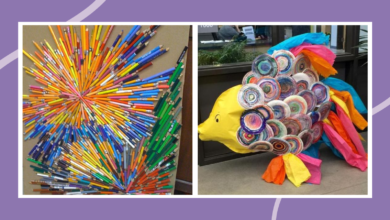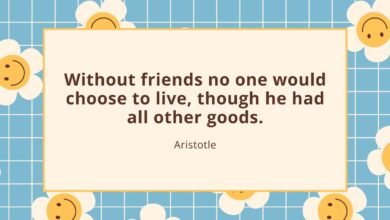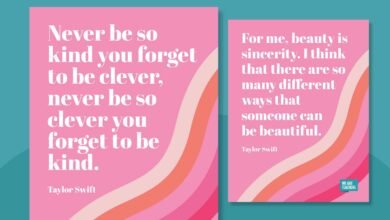Best Poems About Friendship for Students of All Ages
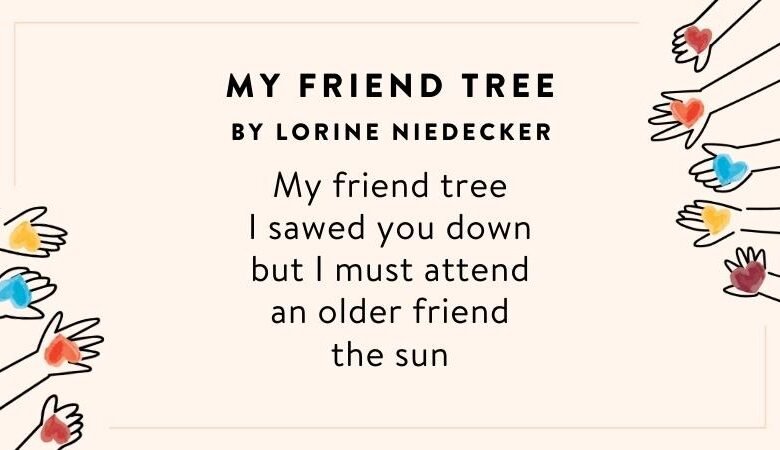
It’s hard to describe how a good companion can change our lives. We may have family, but we don’t choose them. We choose friends, and sometimes they become our family. Knowing you’ve got someone by your side makes journeying through life a little easier. Here are some of the best poems about friendship to share with students. While you’re reading this list, text your bestie to let them know how much you love them!
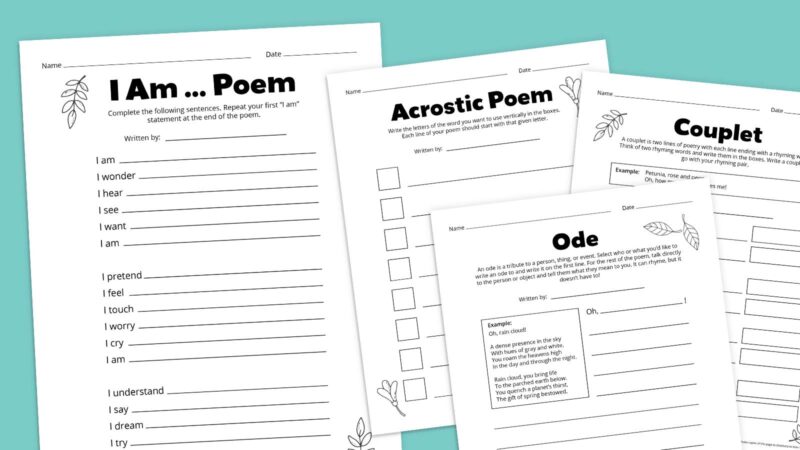
FREE PRINTABLE
Free Poetry Worksheet Bundle
Grab our poetry worksheet bundle to pair with your poetry unit and make teaching poetry fun and simple.
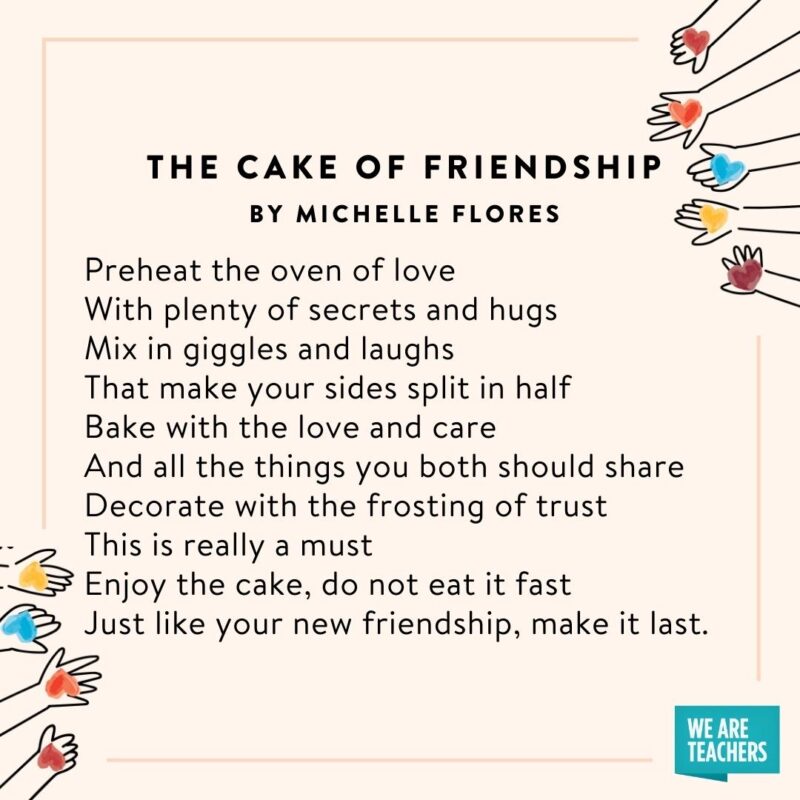
“Preheat the oven of love …”
Themes: Friendship, warmth, generosity
Literary devices: Metaphor, imagery, extended metaphor
This poem uses the extended metaphor of baking a cake to illustrate the ingredients of a strong friendship—love, kindness, and support. It’s great for teaching figurative language, especially metaphor, and discussing how simple, everyday imagery can convey deep emotions.
“The friendship we have is so rare to find.”
Themes: Loyalty, lifelong friendship, gratitude
Literary devices: Rhyme, repetition, personal tone
This heartfelt poem expresses appreciation for a rare and enduring friendship. Its rhyme scheme makes it engaging for young readers, and it can be used to discuss the importance of word choice in conveying sincerity and emotion.
“The best of friends can change a frown …”
Themes: Support, companionship, emotional resilience
Literary devices: Contrast, rhyme, simple diction
This poem highlights how true friends bring joy and help each other through tough times. Its contrasting imagery (frown vs. smile) makes it useful for discussing emotional tone and the role of friendships in well-being.
4. A Friend by Gillian Jones
“A person who will listen and not condemn …”
Themes: Trust, understanding, non-judgmental support
Literary devices: Free verse, conversational tone, imagery
This poem defines friendship through a series of affirmations about what a true friend does. Its straightforward structure makes it ideal for teaching free-verse poetry and for classroom discussions on the qualities of good friends.
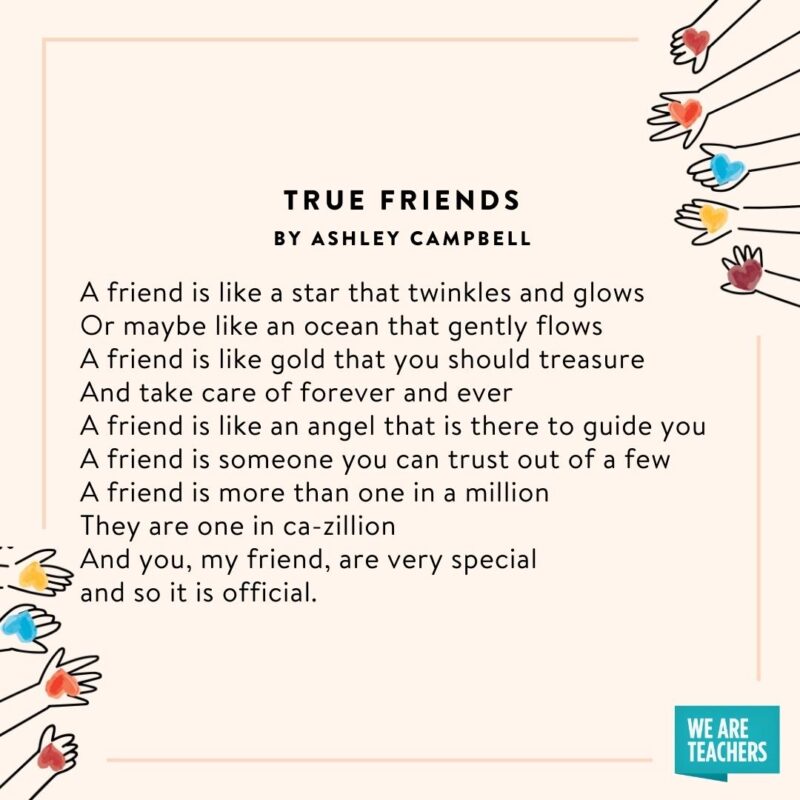
“A friend is like a star that twinkles and glows …”
Themes: Loyalty, appreciation, enduring bonds
Literary devices: Simile, metaphor, rhyme
This poem compares a friend to a star, emphasizing their constant presence and light. The use of simile and metaphor makes it perfect for introducing figurative language, while the themes encourage discussions on the value of true friendship.
“We are friends, I’ve got your back …”
Themes: Loyalty, lifelong support, trust
Literary devices: Repetition, direct address, rhyme
This poem emphasizes unwavering friendship and always having each other’s back. The repeated reassurances make it a great choice for teaching emphasis in poetry and discussing the significance of promises in friendships.
“We had our good days and we had our bad …”
Themes: Change, nostalgia, enduring friendship
Literary devices: Contrast, personal tone, free verse
This poem reflects on both good and bad times in a friendship, acknowledging change but emphasizing the bond that remains. It can be used to explore how poems capture personal experiences and how shifts in tone reflect emotional growth.
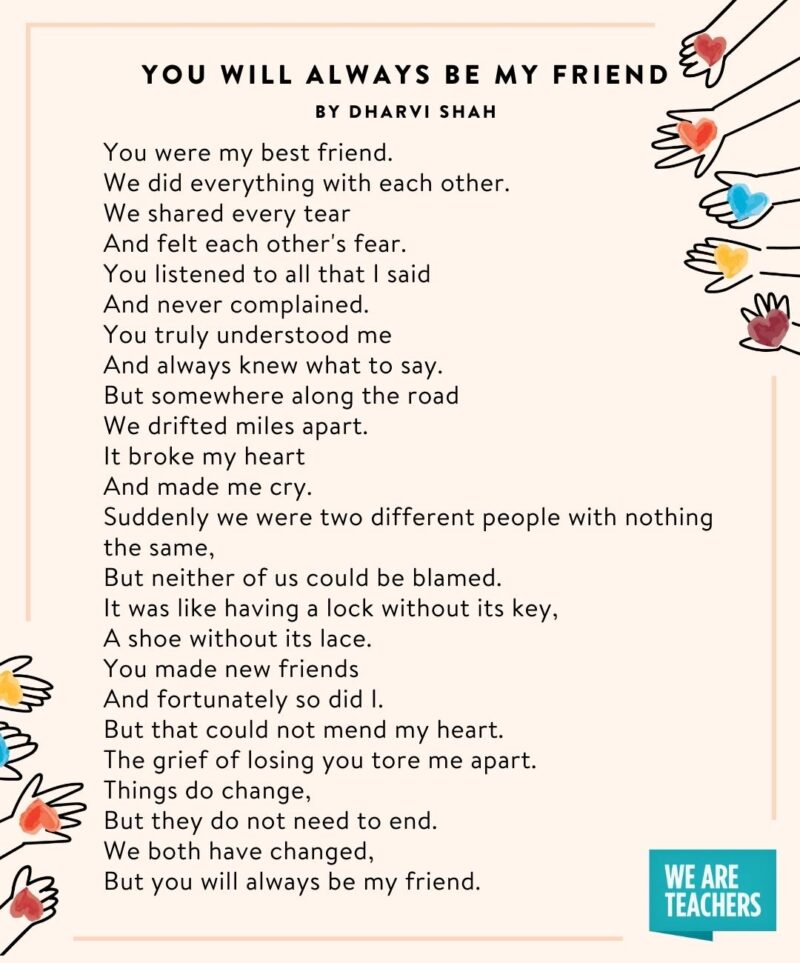
“You were my best friend.”
Themes: Friendship, separation, lasting bonds
Literary devices: Past and present tense contrast, personal reflection, emotional tone
This poem looks back on a deep friendship, one that has faded over time but remains cherished. It’s useful for discussing how poets express nostalgia and how changes in verb tense impact meaning.
“I remember when we met …”
Themes: Support, remembrance, emotional connection, reassurance
Literary devices: First-person narrative, imagery, rhyme
This poem recalls the first meeting between friends and reinforces the idea of always being there. It’s a great example of how personal storytelling can make poetry relatable and how repetition builds emotional impact.
“When I first met you, you greeted me with a smile.”
Themes: First impressions, kindness, appreciation
Literary devices: First-person perspective, imagery, personal tone
This poem reflects on the significance of a friend’s welcoming smile, showing how small gestures can have a lasting impact. It’s great for teaching how poets use simple imagery to convey warmth and gratitude.
“When I was a young girl, we used to play …”
Themes: Nostalgia, childhood friendships, growing up
Literary devices: Flashback, sensory imagery, personal reflection
This poem reminisces about childhood friendships and the experiences that shape us. It’s useful for discussing how poets evoke nostalgia and how memory influences storytelling in poetry.
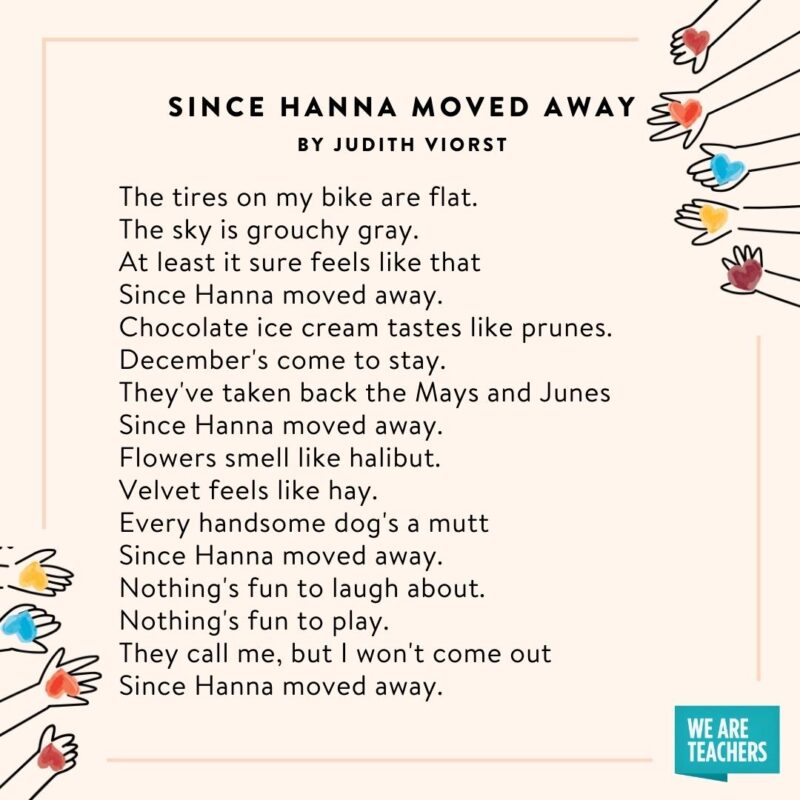
“The tires on my bike are flat …”
Themes: Loss, change, sadness in friendship
Literary devices: Rhyme, repetition, contrast, simile
This poem captures the sadness of losing a close friend due to moving away. The use of everyday imagery (flat tires, bad days) makes it relatable and an excellent choice for exploring how poets express emotions through simple language and simile.
“When a friend calls to me from the road …”
Themes: Friendship, priorities, taking time for others
Literary devices: Imagery, conversational tone, rhyme
This poem reminds us to take a break from work and make time for our friends. It’s a great example of how poets use simple, everyday moments to express deeper ideas about life and relationships.
“Every time I trusted someone, it blew up in my face, for I have no grace.”
Themes: Trust, betrayal, resilience in friendship
Literary devices: Internal rhyme, contrast, personal narrative
This poem discusses struggles with trust and the emotional challenges of friendship. It can be used to examine how poetry reflects real-life experiences and how contrast (good vs. bad friendships) builds depth in storytelling.
“In the neighborhood where I was raised …”
Themes: Unity, loyalty, childhood bonds
Literary devices: Narrative style, first-person perspective, rhyme
This poem tells a story of childhood friendships and shared experiences, emphasizing unity. It’s useful for teaching narrative poetry, the importance of setting, and how everyone deserves respect despite their differences.
“Childhood friends? I hope we still are.”
Themes: Nostalgia, reconnection, enduring friendship
Literary devices: Epistolary form, rhetorical questions, direct address
This poem is written as a heartfelt letter to a childhood friend, expressing hope that their bond has remained strong over time. It’s a great example of epistolary poetry and can be used to discuss how personal reflection and direct address create an intimate, emotional tone.
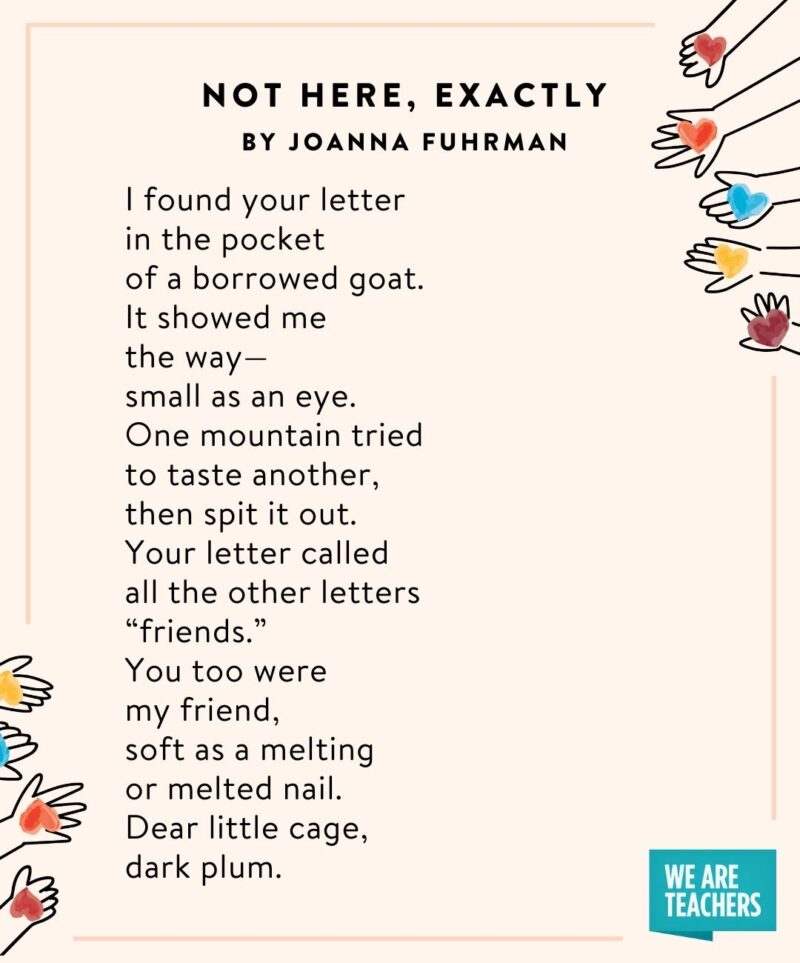
“I found your letter …”
Themes: Distance, memory, longing in friendship
Literary devices: Free verse, abstract imagery, fragmented structure
This poem explores the feeling of absence and connection across distances. Its abstract style makes it useful for analyzing how poets use unconventional imagery and form to capture complex emotions.
18. Sisters by Lucille Clifton
“me and you be sisters …”
Themes: Sisterhood, unity, resilience, cultural identity
Literary devices: Repetition, vernacular language, rhythm
This poem celebrates the deep and unbreakable bond between women, particularly within the context of shared experiences and struggles. It’s an excellent choice for discussing voice in poetry, as well as themes of solidarity and empowerment.
“If I were to live my life in catfish forms …”
Themes: Unconventional friendship, devotion, nature imagery
Literary devices: Metaphor, surrealism, conversational tone
This poem compares friendship to the natural world, using an unexpected metaphor of a catfish to convey loyalty and deep connection. It’s great for teaching how surreal imagery and metaphor can create a unique, emotional impact.
“As late I rambled in the happy fields …”
Themes: Gratitude, beauty, poetic inspiration
Literary devices: Romantic imagery, classical allusions, rhyme
Keats expresses appreciation for a friend’s gift of roses, turning a simple act into a poetic reflection on beauty and joy. This poem is ideal for discussing the Romantic era’s themes and how poets use nature imagery to express emotions.
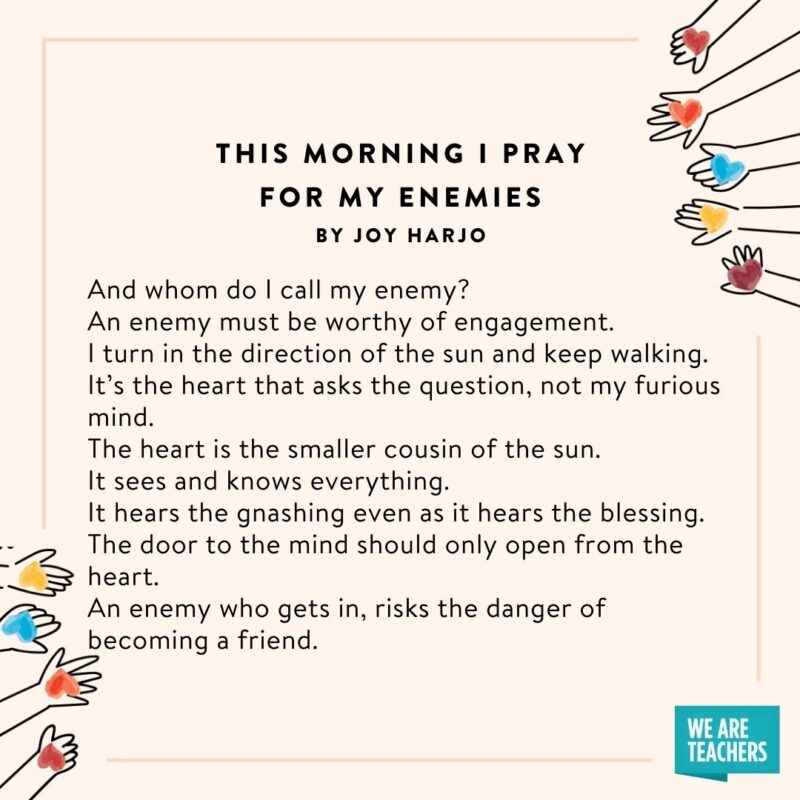
“And whom do I call my enemy?”
Themes: Forgiveness, understanding, transformation
Literary devices: Rhetorical questions, repetition, spiritual imagery
This poem challenges the reader to reconsider the concept of enemies, suggesting that understanding and forgiveness can foster a different kind of connection. It’s excellent for discussing themes of reconciliation, perspective shifts, and how poetry can be a form of meditation or prayer.
“Otis on vinyl carries from the barn.”
Themes: Shared experiences, nostalgia, quiet moments in friendship
Literary devices: Free verse, sensory imagery, conversational tone
This poem captures a specific moment shared between friends, using rich imagery and a relaxed tone to highlight the beauty of everyday experiences. It’s useful for teaching how poetry can preserve memories and how minimalism in poetry can be powerful.
23. Travelling by William Wordsworth
“This is the spot:—how mildly does the sun …”
Themes: Reflection, nature, solitude vs. companionship
Literary devices: Romantic imagery, personification, lyrical tone
This poem describes a traveler’s moment of appreciation for nature’s beauty, evoking a sense of peace and contemplation. It can be used to explore Romantic poetry’s connection to nature, as well as how travel can shape personal and philosophical insights.
“And a youth said, Speak to us of Friendship.”
Themes: The meaning of friendship, selflessness, connection
Literary devices: Philosophical tone, metaphor, poetic prose
This well-known passage from The Prophet offers profound reflections on the nature of friendship, emphasizing mutual growth and emotional depth. It’s excellent for discussing wisdom literature, extended metaphor, and how poetry can serve as a source of guidance.
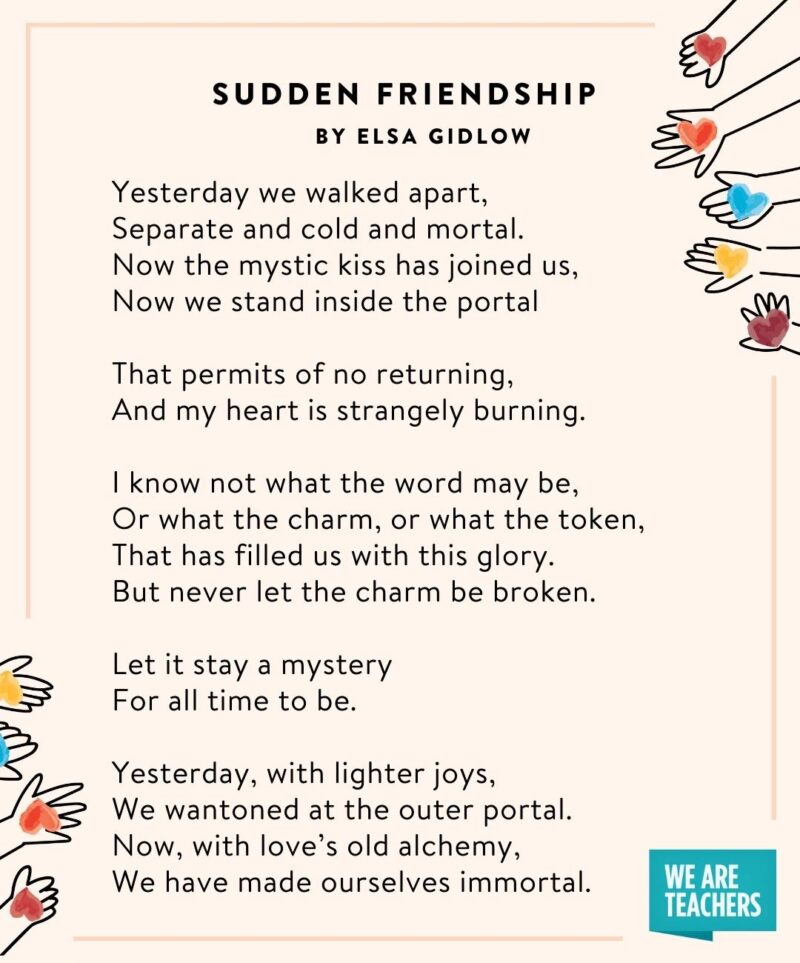
“Yesterday we walked apart …”
Themes: Instant connection, fleeting but meaningful bonds
Literary devices: Free verse, contrast, personal tone
This poem explores the experience of forming an unexpected yet intense bond with another person. It’s great for analyzing how poets use contrast (before and after meeting) to highlight the impact of a new relationship, as well as discussing how friendships can be transformative.
“You feeble few that hold me somewhat more …”
Themes: Friendship, loyalty, resilience
Literary devices: Apostrophe, direct address, contrast
In this poem, Cullen speaks to his friends, acknowledging both their support and the struggles he faces. It’s excellent for discussing the poet’s use of direct address to create an intimate and reflective tone, as well as exploring themes of steadfastness and appreciation in friendships.
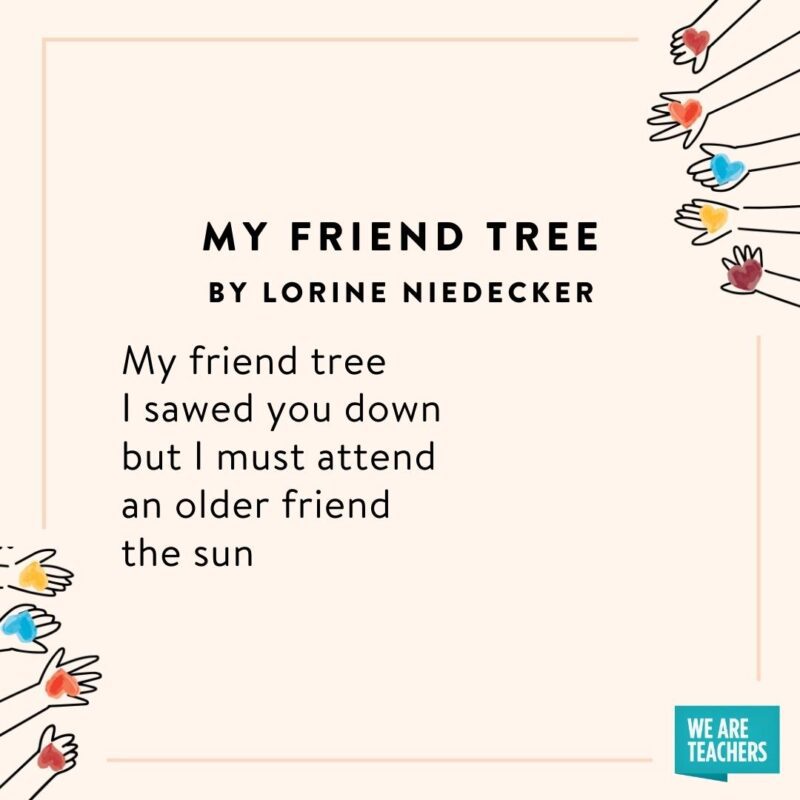
“My friend tree, I sawed you down …”
Themes: Loss, regret, connection to nature
Literary devices: Personification, symbolism, minimalism
This short but powerful poem uses the image of a felled tree to symbolize a lost friendship or a severed connection. It’s useful for discussing how poets convey deep emotion through minimal language and symbolism, making it an effective piece for analyzing eco-poetry and metaphor.
“So we, who’ve supped the self-same cup …”
Themes: Reconciliation, forgiveness, enduring friendship
Literary devices: Metaphor, rhythm, lyrical style
Dunbar’s poem captures the emotions of reconciliation after a disagreement between close friends. The poem’s flowing rhythm and musicality make it ideal for discussing how structure reinforces meaning, as well as exploring the universal experience of conflict and resolution in friendships.
29. If You Knew by Ruth Muskrat Bronson
“If you could know the empty ache of loneliness …”
Themes: Loneliness, empathy, cultural understanding
Literary devices: Repetition, rhetorical questioning, emotional appeal
This poem invites the reader to step into the speaker’s loneliness, evoking deep empathy. It can be used to discuss perspective-taking, the power of rhetorical questions in poetry, and how poetry serves as a tool for fostering human connection and understanding.
30. Red Brocade by Naomi Shihab Nye
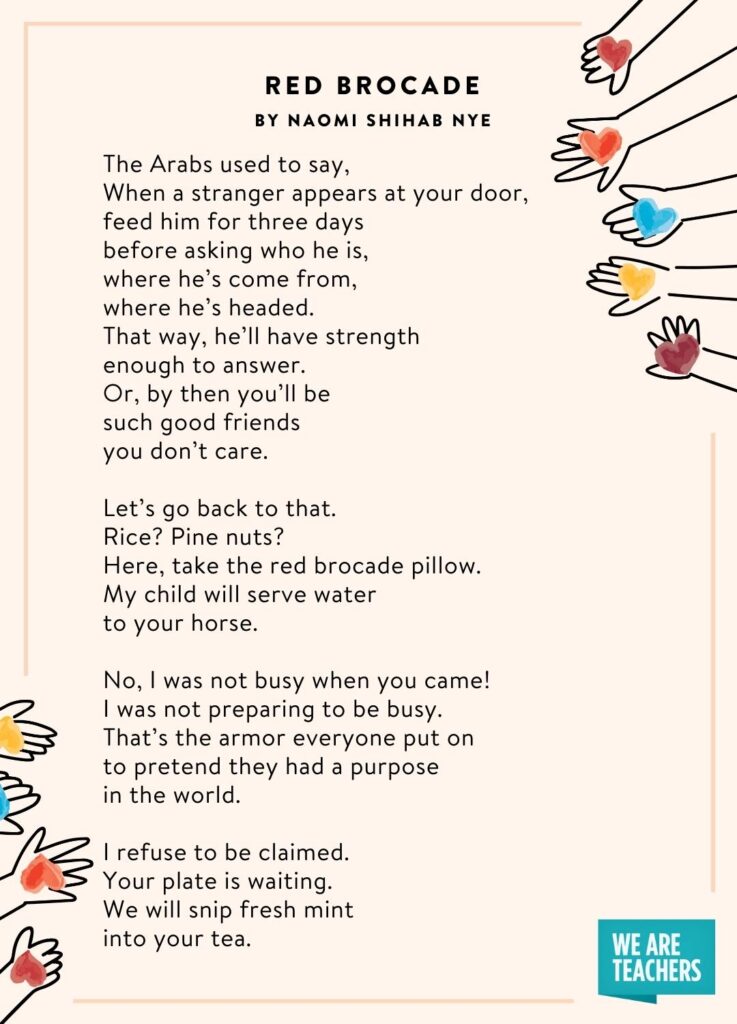
“When a stranger appears at your door, feed him for three days before asking who he is …”
Themes: Hospitality, generosity, traditional values
Literary devices: Historical allusion, direct address, storytelling
This poem reflects on an old Arab proverb about hospitality and kindness, contrasting it with modern-day attitudes. It’s excellent for discussing how poetry can preserve cultural wisdom, as well as exploring themes of generosity, connection, and the tension between tradition and change.
Get your free printable poetry worksheet bundle!

Are you ready to bring these activities to your classroom? Click the button below to receive our poetry worksheet bundle and get started!
Want to add to our list of the best poems about friendship? Come share in our We Are Teachers HELPLINE group on Facebook!
Want more poetry for your classroom? Be sure to subscribe to our newsletters to find out when it’s posted!
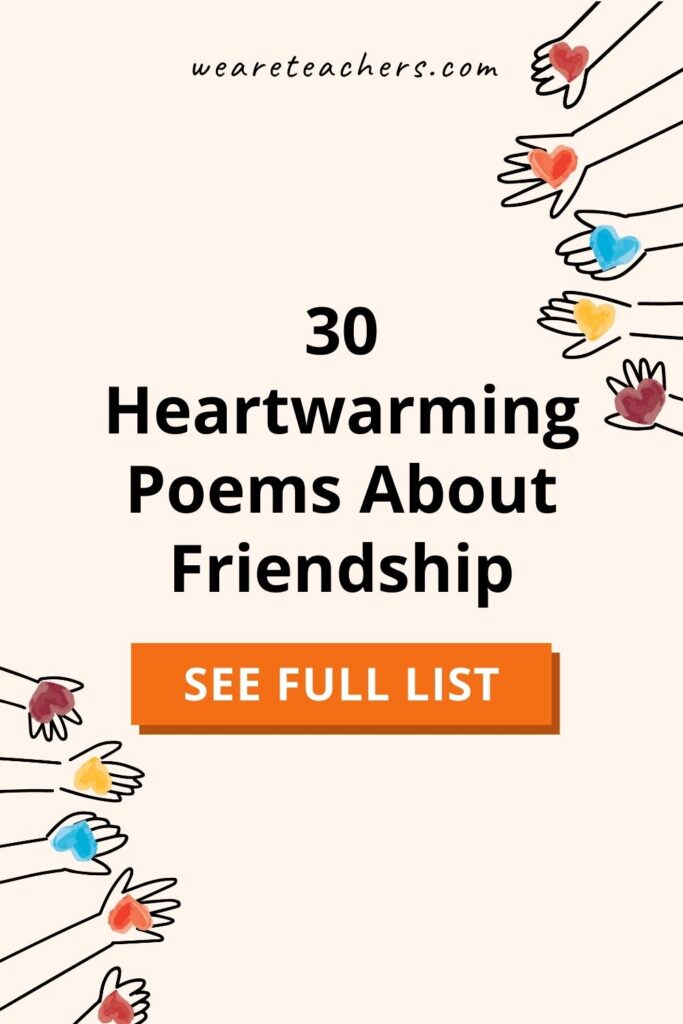
Source link

